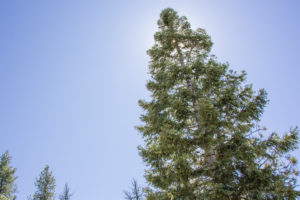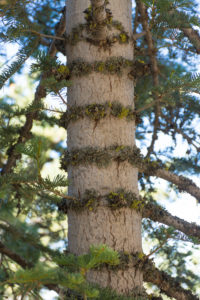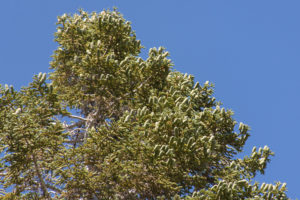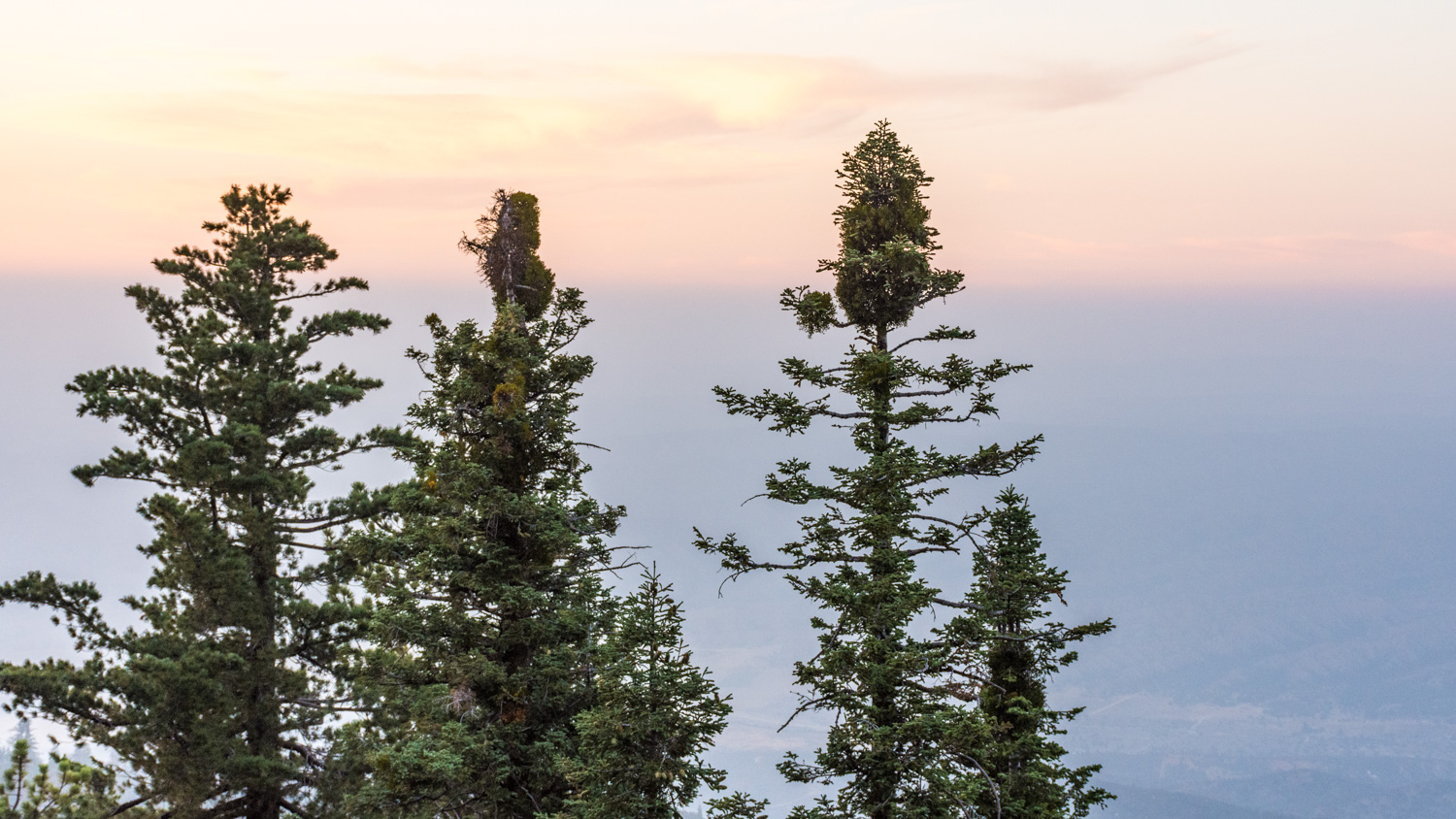
Abies concolor var. lowiana
The white fir is widely found across the mountains of the West, from the Colorado Rockies to the Coast Ranges of Oregon and south to the Baja peninsula. It has a number of geographically distinct varieties, one being the California white fir. A few pockets of the California white fir exist in southern California in the Tehachapis, Transverse, and Peninsular ranges.
In the Los Padres National Forest they are found primarily at high altitudes in northern Ventura County and southern Kern County. You can find them on north slopes around Pine Mountain, Mt. Pinos, Tecuya Ridge, and other mountains in the Mt. Pinos Ranger District.

The white fir is commonly found with other conifers, including ponderosa pine, Jeffrey pine, sugar pine, and incense-cedar. In contrast to other white fir varieties, the California white fir is more spire-like and narrow at the crown and has a darker, greener foliage (though it appears grayish and frosted when viewed from below.) They are also much larger, growing more than 240 feet tall.
All white fir have bark that changes with age, from light gray and smooth to dark brown and thickly furrowed. Younger trees Their needles are strongly aromatic with citrus-like essential oils present, and cones are found only in the treetops and are tightly barrel-shaped, upright, and green in the summer turning brown when mature.
Because cones are borne almost exclusively in the uppermost part of the crown, any top damage caused by insects, diseases, wind, or snow will reduce cone production. Large old trees are especially prone to such damage. Seeds are released as the cones disintegrate on the tree.

White fir is one of twelve Management Indicator Species (“MIS”) on the Los Padres National Forest. MIS are plants and animals that are monitored by the U.S. Forest Service because they indicate the effects of land use activities. There are three MIS to evaluate the health of montane conifer forests on the forest and white fir is one of them.
Threats
Strangely, it is the white fir’s association with all things merry (i.e. the Christmas holiday) that contributes to some of the threats it faces. These trees, often sold in the commercial Christmas tree business due to their neatly pyramidal shape and soft needles, face poaching threats each December as people illegally harvest them from Forest Service land. Forest Service officers report catching a couple tree rustlers a year, though they note many more trees illegally removed from the roadside. The penalty for taking one tree can be as much as $5,000.
Another link the white fir shares with the holidays is its display of mistletoe, though it is certainly not the tree’s idea of “decorating.” A parasitic plant, the mistletoe will grow as an infestation upon the tree, creating weak spots in trunk and limbs that can lead to breakage and often death. A study in 1990 found that as much as 1/3 of white fir stands are infected with mistletoe. It’s all part of the forest life cycle, with downed trees contributing soil nutrients and habitat for wildlife.

Other natural mortality agents that affect California white firs include wildfire, drought, beetles, and various diseases like root rot and yellow cap fungus. Thin-barked, resin blistered, drooping lower branches makes young white firs are susceptible to fire, though mature trees with thickened bark and self-pruned lower branches can be relatively fire tolerant.

In 2018, the Forest Service announced plans for commercial logging on Tecuya Ridge in the San Emigdio Mountains as well as nearby along the base of Mt. Pinos. White fir was listed as one of the target species to be logged as part of the proposal. ForestWatch officially filed technical comments calling the justification for the projects into question. We will continue working to protect these forested areas from damaging activities like commercial logging.






